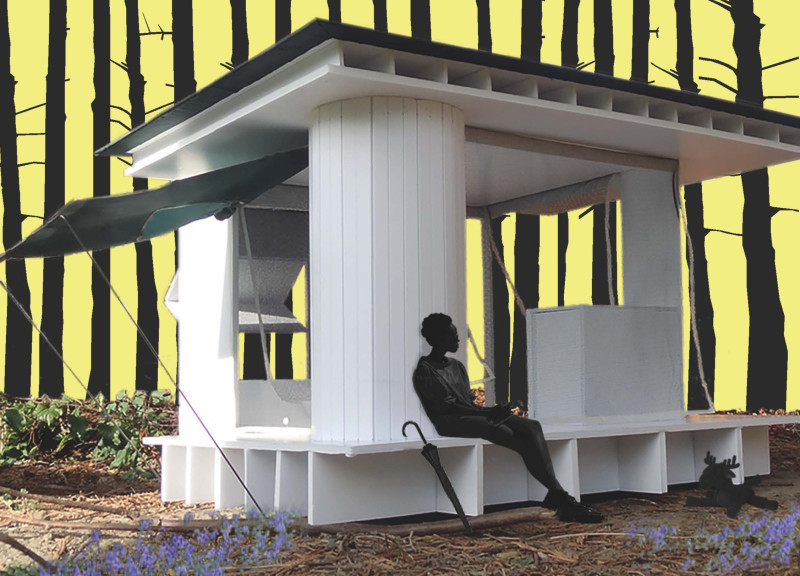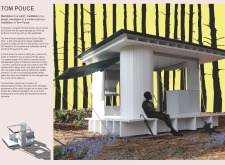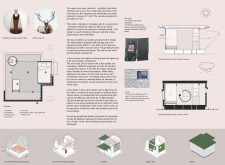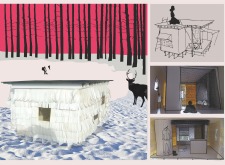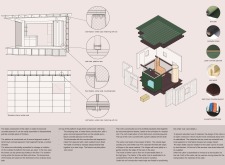5 key facts about this project
The Tom Pouce design is located at the Ozilini Organic Farm and serves as a meditation retreat, focusing on user connection with the natural environment. The concept is shaped by a fairytale about a boy as small as a thumb, representing strength in compactness. This theme informs the exploration of how spatial design can enhance meditation and foster a relationship with the surrounding landscape.
Design Concept
The cabin is arranged as an open structure with a central platform that includes a sleeping area, kitchenette, and dry toilet, totaling 11 m². An additional veranda expands this area to 15 m². This layout encourages a flow between indoor and outdoor spaces, allowing visitors to engage with nature while providing a quiet place for contemplation.
Seasonal Adaptability
The design promotes adaptability throughout the seasons. During summer, the cabin functions as an airy, open space, utilizing a high-quality tent for comfort. In winter, a protective "winter coat" surrounds the cabin, ensuring warmth and creating an intimate atmosphere. This ability to transform with changing weather highlights the project's responsiveness, enriching the user's experience at different times of the year.
Cultural Inspiration
Layers play a significant role in the design, taking inspiration from historical costumes of Riga. These layers do more than provide visual interest; they symbolize seasonal transitions and the dynamics of space. By incorporating cultural narratives, the design invites deeper engagement with the environment, emphasizing the link between architecture and its historical influences.
Functional Solutions
The cabin features a power bank that provides energy for lighting, heating, and cooking for up to five days, enhancing its self-sufficiency. This focus on practicality aligns with the overall design goals, ensuring that basic needs are met while supporting meditation. The structure mainly uses timber frames and concrete plywood, which allows for easy assembly and disassembly to reduce environmental impact.
Large windows invite natural light and ventilation into the interior, creating a calm atmosphere that supports the intended meditative practices.


